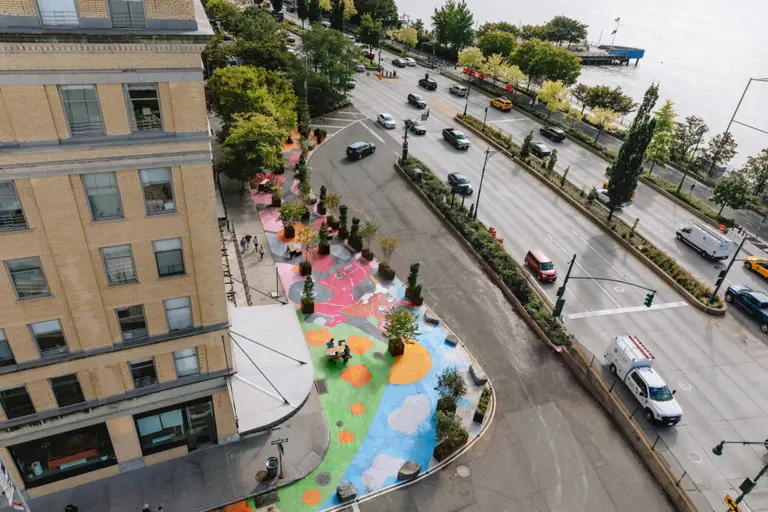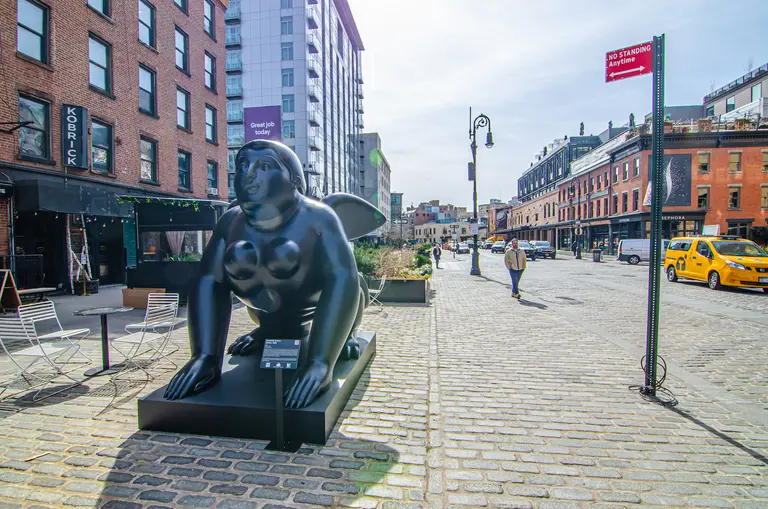Whitney Museum’s new project pairs art from 1932 with present-day scenes of NYC

George C. Ault, “Hudson Street” (northwest view of Hudson and Gansevoort Streets). Image courtesy of the Whitney Museum of American Art
The Whitney Museum on Wednesday launched “Putting Artists On The Map,” a new project celebrating the museum’s landmark Biennial exhibition that has been held regularly since 1932. The interactive digital map pairs paintings depicting New York City from the very first Biennial with photos of the same scenes in the present day. The map also provides a snapshot of Whitney Biennial moments across the city, including the locations where artists from past exhibitions had studios and the subway stations where works by Biennial artists were installed.

The inaugural Whitney Biennial, a survey of contemporary American art, opened on November 22, 1932, featuring works that depicted life in NYC. Highlighted pieces included Edward Hopper’s famous “Room in New York,” and other works by artists Joseph Stella, Florine Stettheimer, George C. Ault, and others.
To celebrate the latest edition of the Biennial—”Whitney Biennial 2024: Even Better Than The Real Thing“—the museum worked with architectural photographer Max Touhey to determine the exact locations of the NYC scenes depicted in works from the 1932 Biennial and recreate them with photographs.

“The Biennial has been part of the Whitney — and New York City — for nearly a century, and every iteration offers the opportunity to bring new voices to the fore,” Kim Conaty, Nancy and Steve Crown Family Chief Curator, said.
“Just as the 1932 edition gave us contemporary reflections by the likes of Hopper and Stettheimer, today’s Biennial artists are helping to shape the landscape of tomorrow.”
Touhey’s work illustrates how the city has changed, as well as the lasting influence of the biennial, which is the longest-running survey of American art that has shined a spotlight on the most relevant artists and ideas of the time.
Determining the locations and capturing the images was no easy feat. Some of the buildings depicted in past artworks have been replaced with newer developments, or aren’t open to the public, forcing Touhey to come up with creative solutions.
Touhey flew a drone outside windows he thought biennial artists had once looked through, and in one instance on Eighth Avenue, raised a 30-foot-tall tripod at 4 a.m. up to an apartment where painter Jane Dickson lived, according to the New York Times.


Featured works on the map include George C. Ault’s “Hudson Street,” Francis Criss’ “Astor Place,” David Morrison’s “Union Square,” John Cunning’s “Sunset, New York Bay,” Kenneth Fraizer’s “The Leviathan Goes to Sea,” and Edward Laning’s “Fourteenth Street.”
The Whitney has also recreated the view of its original museum building at 10 West 8th Street, which was featured on the cover of the 1932 Biennial catalog.

“Whitney Biennial 2024: Even Better Than The Real Thing” is on view at the museum, located at 99 Gansevoort Street in the Meatpacking District, until August 11.
In December 2022, the Whitney Museum launched a digital map offering viewers a chance to explore NYC from Edward Hopper’s perspective. The map, functioning similarly to the museum’s current project, provided a side-by-side comparison of Hopper’s portrayal and a photo of a location as it looks today taken from the same perspective, including places like the Manhattan Bridge, Washington Square Park, and Roosevelt Island.
RELATED:


































